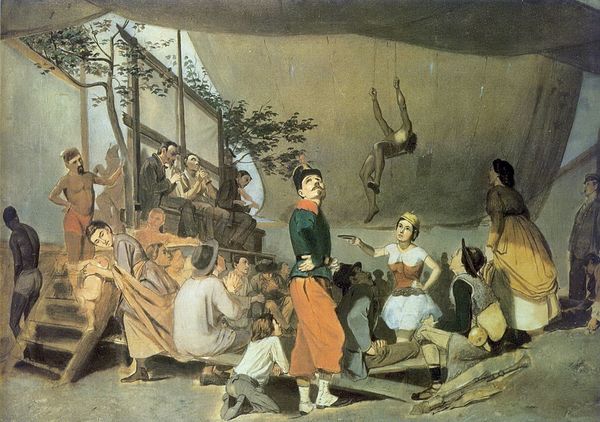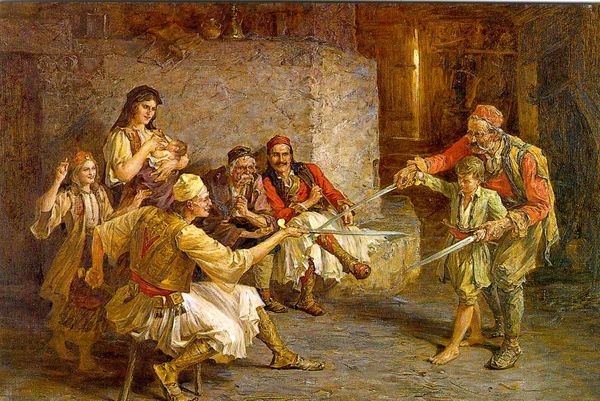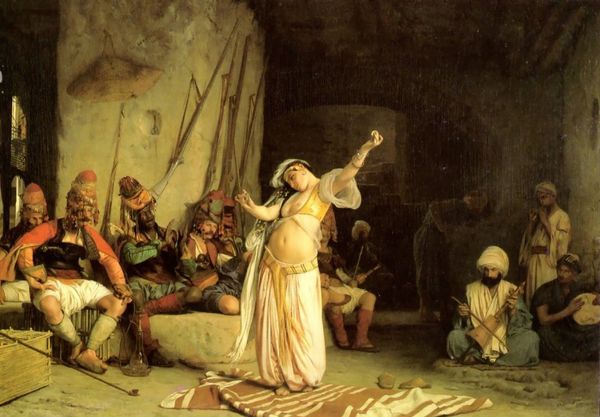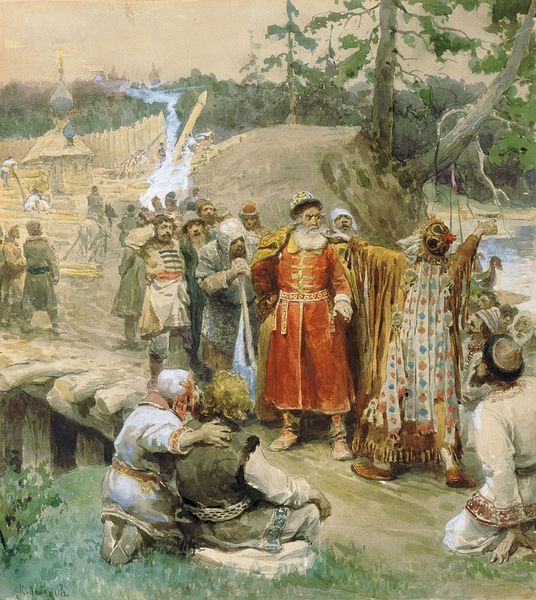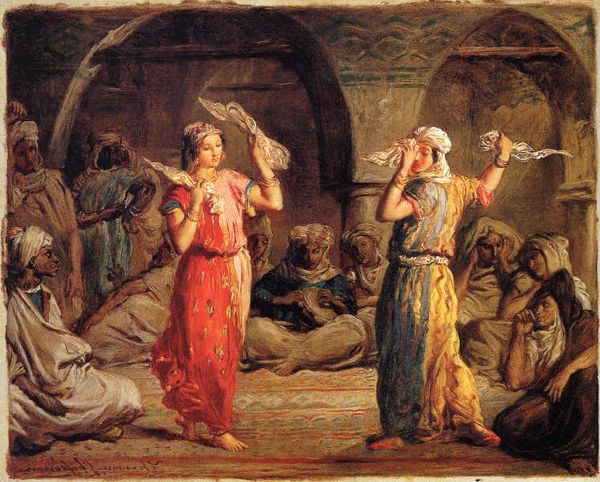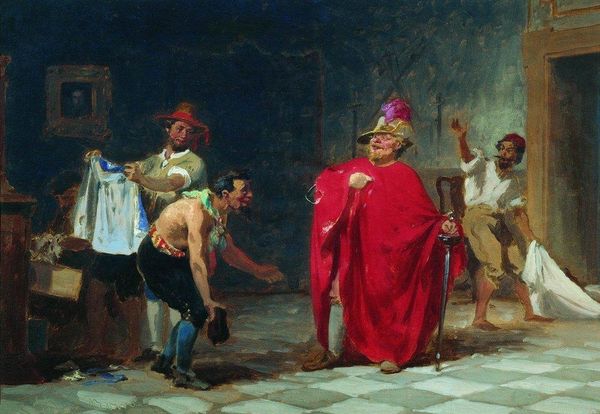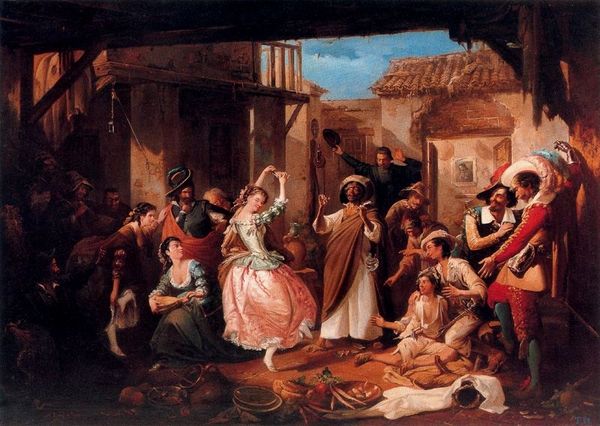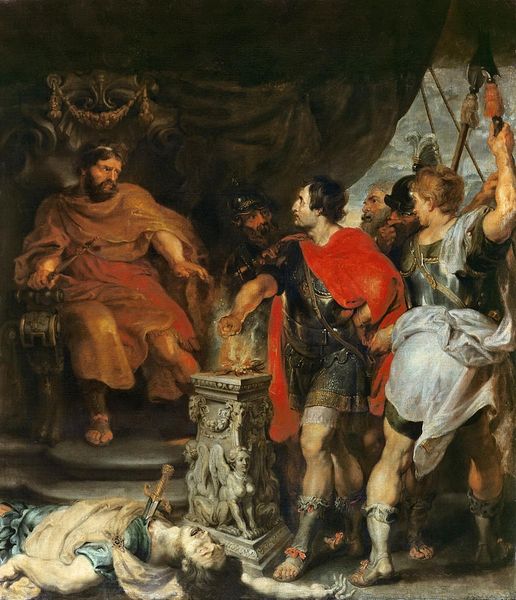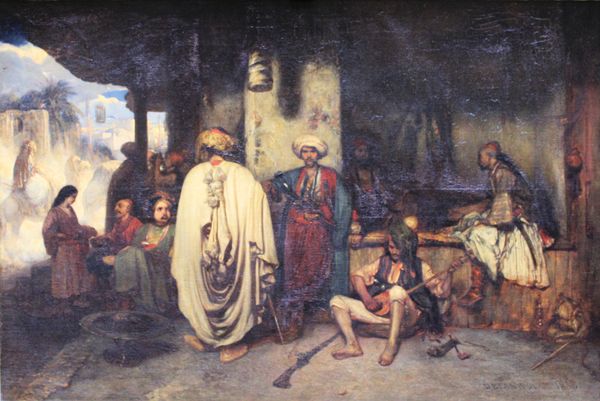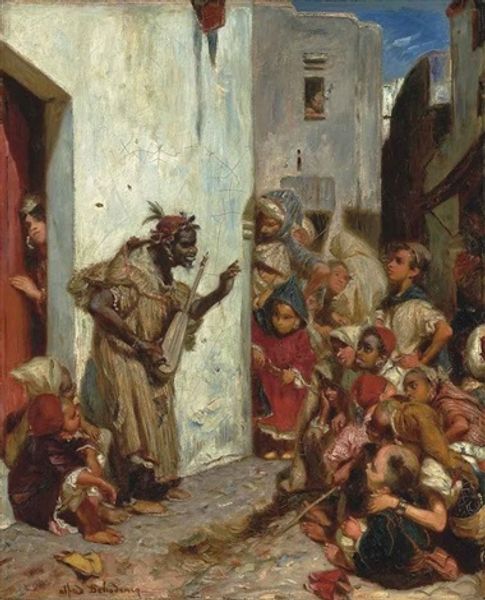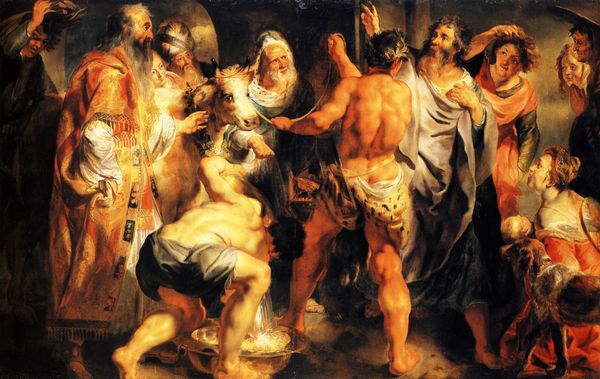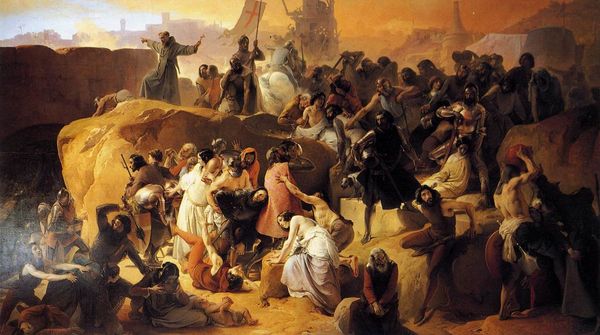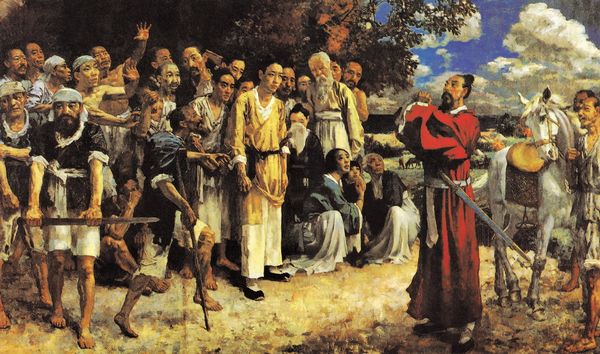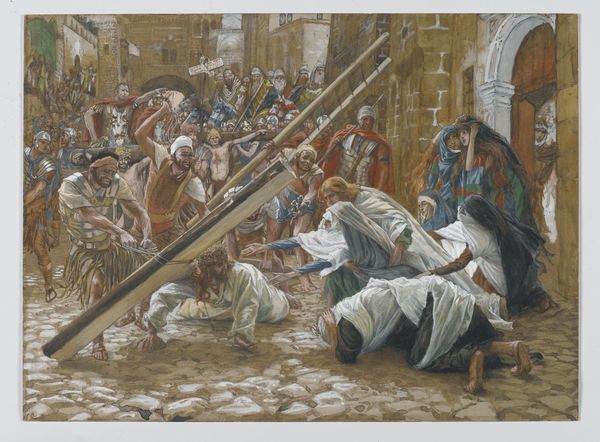
#
candid
#
festivity
#
live stage event photography
#
festival photography
#
festivity and dance
#
performing
#
culture event photography
#
cultural celebration
#
celebration photography
#
stage performance
Copyright: Public domain US
Editor: Here we have Paja Jovanovic's "The Sword Dance or Fencing Game," painted in 1890. The energy just leaps off the canvas! I’m immediately struck by the vibrant scene, a whirlwind of motion centered on that daring dancer. What's your interpretation of its cultural significance? Curator: This painting is interesting as a reflection of the social and political currents swirling around the Balkans at the close of the 19th century. Jovanovic, though a Serb, paints a scene brimming with a generalized "orientalism" – a Western European fascination (and often misrepresentation) of Balkan customs. Consider the costumes; do they feel authentic, or constructed for an audience? Editor: That's a compelling point. There’s a certain romanticism in how the figures are presented, even theatricality, that might lean towards construction rather than documentary. So, this isn't necessarily about accuracy, but about constructing an image? Curator: Precisely. The painting functioned within a specific art market, catering to Western European collectors who sought exoticized views of the East. It solidified, and perhaps even perpetuated, certain stereotypes. How do you think that plays into its artistic value today? Editor: It makes me reconsider my initial, purely aesthetic appreciation. Knowing the historical context forces you to think about whose gaze this was created for and what narratives it reinforces, or challenges. I still find the dynamism of the dancer impressive, but it is difficult to dismiss the context. Curator: Understanding that context allows us to view it with critical eyes. Recognizing how social and political power shapes artistic representations enriches our understanding of art's role in society. Hopefully it provokes conversation and critical thought about the images and representations of the Balkans region at that time. Editor: Absolutely, it is a lot to unpack, but I'm now thinking of art as less a straightforward depiction of reality and more a complex cultural artifact, shaped by market forces and Western perspectives. Thanks!
Comments
No comments
Be the first to comment and join the conversation on the ultimate creative platform.
